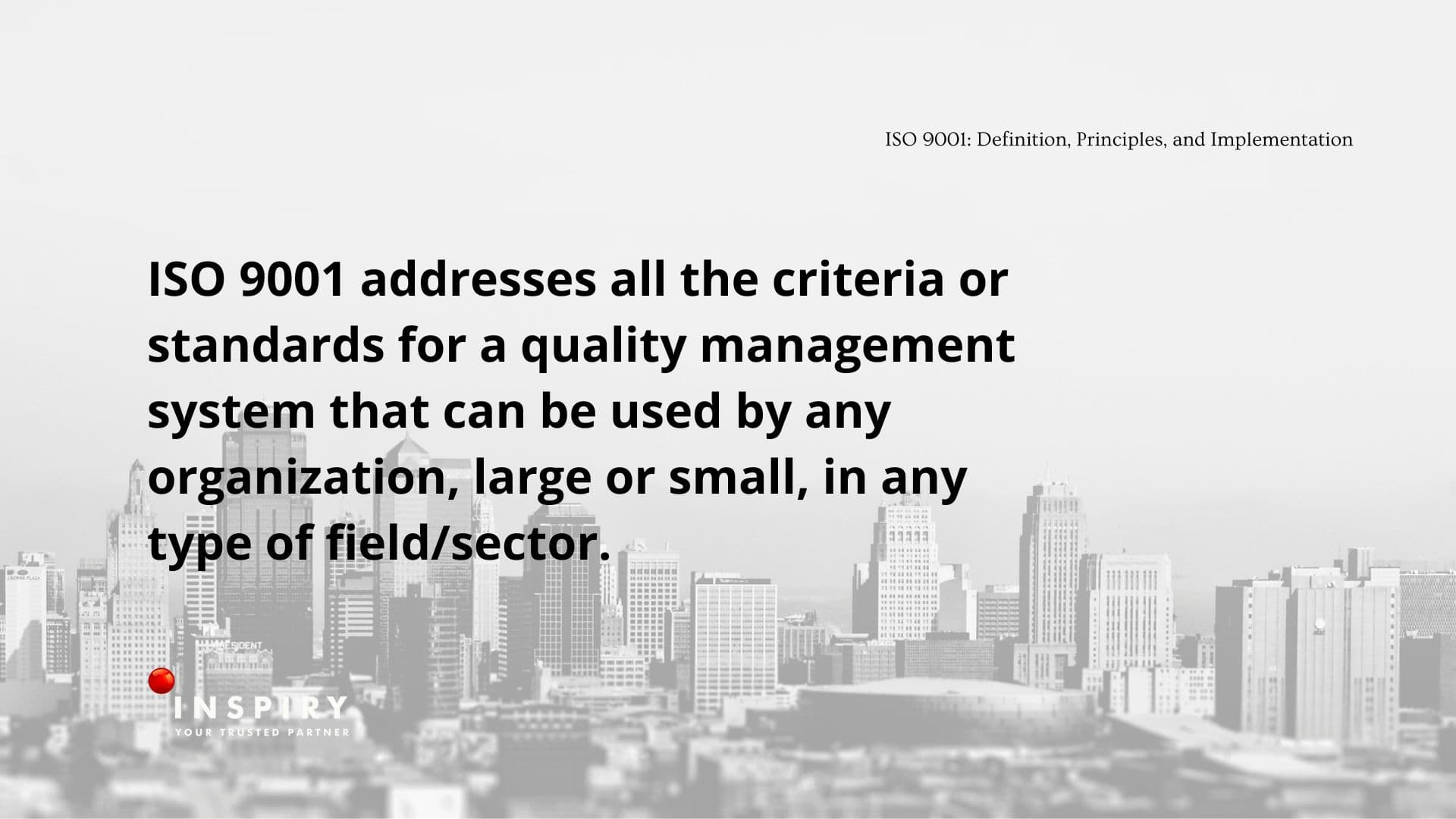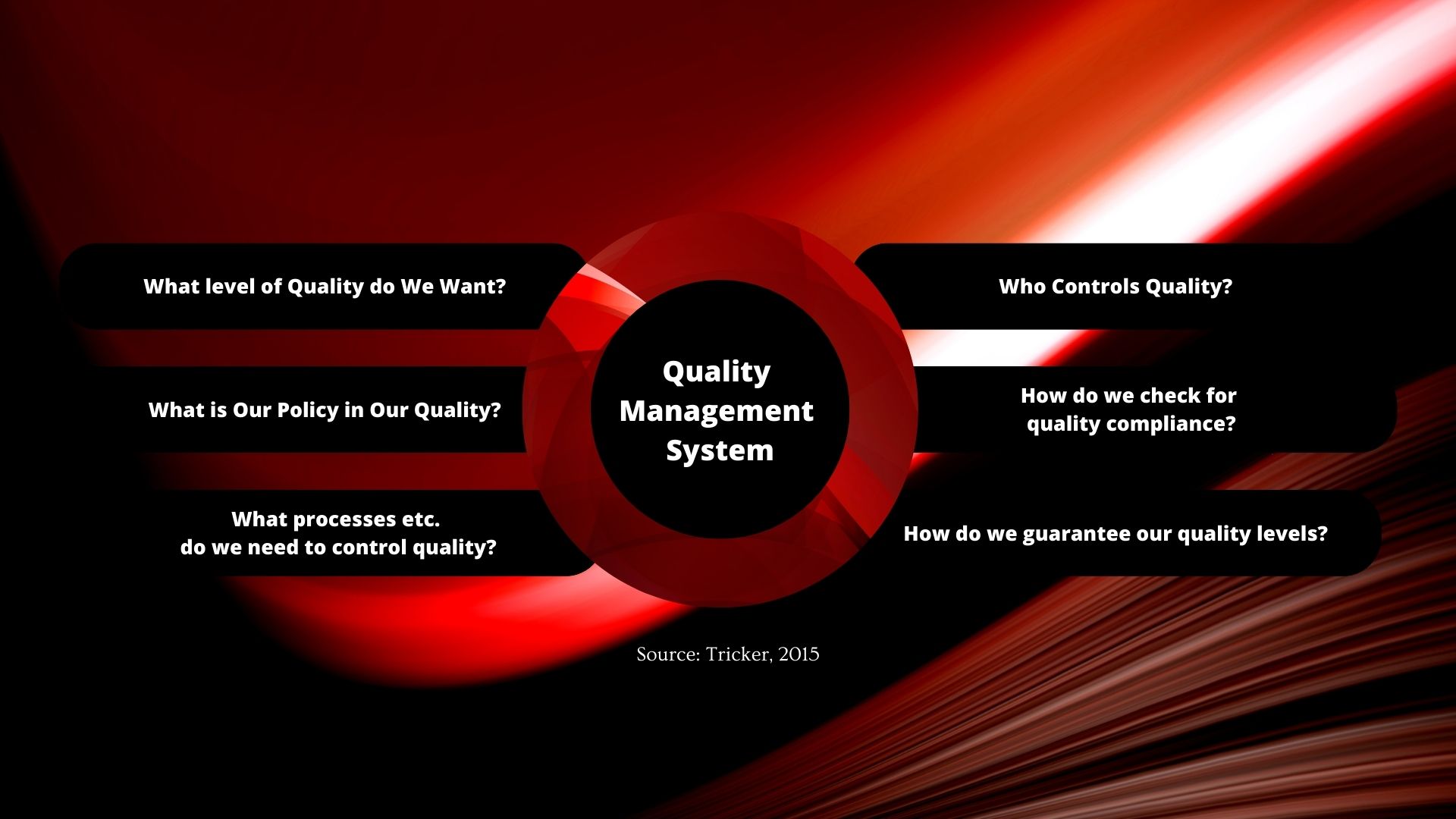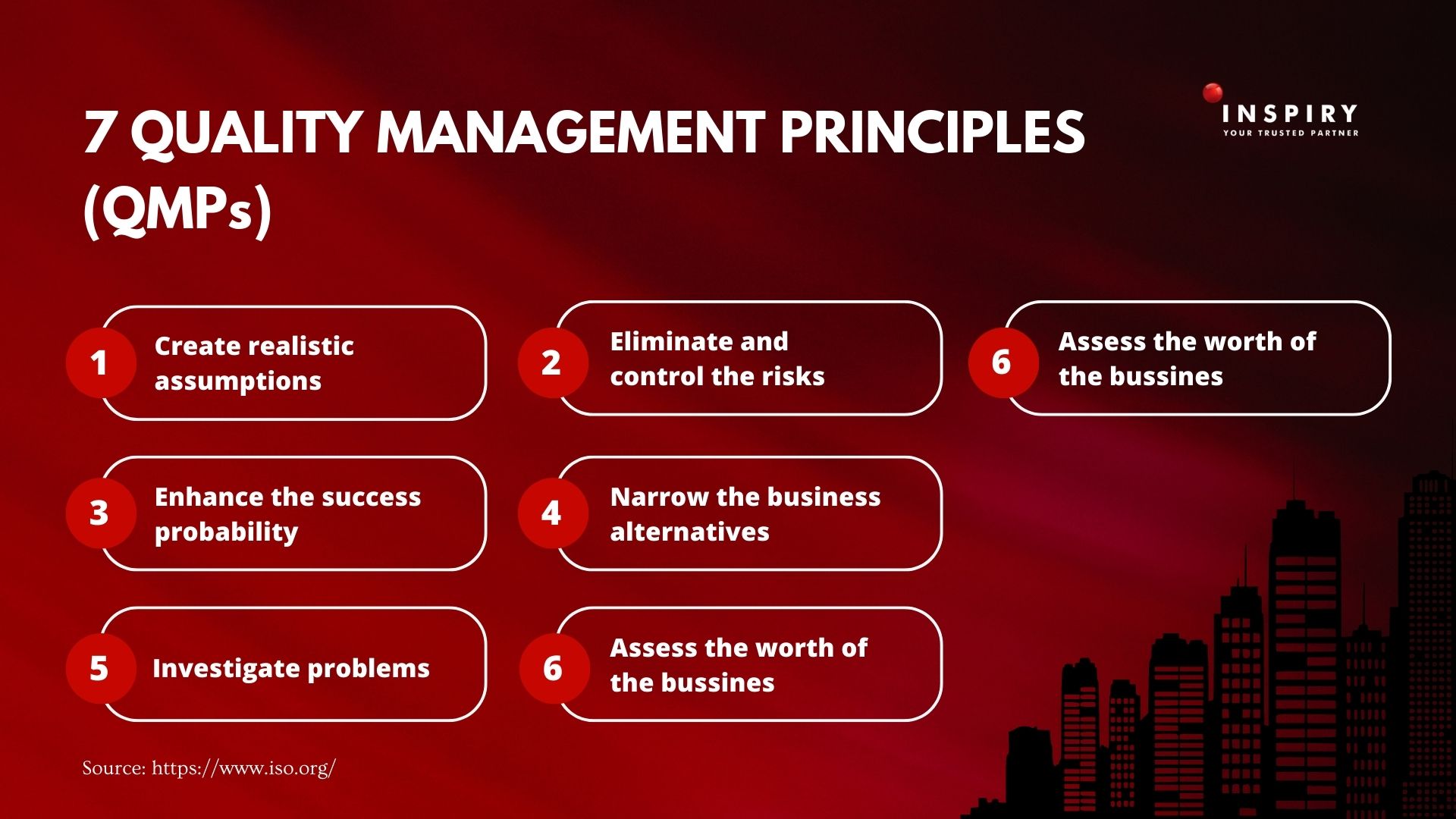
Blog Detail
ISO 9001: Definition, Principles, and Implementation

What is ISO 9001?
Certification related to Quality Management Systems, namely ISO 9001, from the International Organization of Standardization (ISO), has become a fundamental requirement for businesses that want to ensure continuous quality improvement. ISO 9001 addresses all the criteria or standards for a quality management system that can be used by any organization, large or small, in any field/sector. More than 1M companies and organizations across +170 countries already have ISO 9001.
Chen & Wu (2011) showed significant differences between ISO-certified and non-certified manufacturing companies based on four perspectives. Those are financial, customer, internal process, and learning & growth perspectives. This study collected data from 282 ISO-certified companies and 125 non-certified companies. Chen & Wu (2011) revealed that companies with ISO certificates perform better. Thus, this result implied that ISO certification significantly affects the company's performance.
The application of ISO 9001 can help you in answering the "Six Big Questions" shown in the following figure:

What are ISO 9001 Principles?
ISO 9001 Principles are called Quality Management Principles (QMPs). The principles below are not listed based on priority ranking. The importance of each will vary from company to company and may change from time to time. The principles of quality management are as follows (ISO QMPs, 2015).
QMP 1 – Customer focus: Customer responses provide opportunities to create additional value that suit the customer's expectations. Companies can understand the current and future needs of customers and other related parties.
QMP 2 – Leadership: Leaders have an essential role in creating unity of purpose and direction. Leaders must encourage workers' involvement, thus enabling a company to align its strategies, policies, processes, and resources to achieve its goals.
QMP 3 – Engagement of people: It is crucial to involve everyone at all levels and respect them as individuals. Recognition, empowerment, and enhancing the employee's competence are beneficial in achieving the company's quality objectives effectively.
QMP 4 – Process approach: The quality management system consists of interrelated processes. Understanding how the results generated by the system are essential since it will enable the organization to optimize its performance.
QMP 5 – Improvement: Improvement is necessary for companies to maintain performance levels, generate appropriate responses toward changes in internal and external conditions, and create new opportunities.
QMP 6 – Evidence-based decision making: Decision-making often involves multiple types and sources of input, and their interpretations, which sometimes are subjective. It is substantial to understand causal relationships and potential unintended consequences. Facts, evidence, and data analysis lead to greater objectivity and confidence in decision-making.
QMP 7 – Relationship management: Sustained success is possible when an organization can manage relationships with related parties well to optimize their impact on company performance.

How to Implement ISO 9001?
Step 1 – Assign resources and budget: Top management must ensure the availability of resources and finances to support the ISO 9001 implementation. Top management should give total support to its team.
Step 2 – Adopt the standards and do the training: Familiarize yourself with the language, concepts, and terms. Purchase and read a copy of ISO 9000:2015 and ISO 9001:2015. Training with third parties can also help you master the information and requirements of ISO 9001:2015.
Step 3 – Gap analysis, action plan: Gap analysis is a technique for clearly identifying which clauses of ISO 9001 that has not been fully addressed (or not addressed at all) and for developing corrective actions. This step is performed by selected members, including personnel from each process or department, who have been approved by top management.
Step 4 – Management review: Top management should review the gap analysis, identify areas of weakness, prioritize the observed gaps, and provide the necessary corrective actions. Approve the resulting gap analysis action plan.
Step 5 – Begin closing the gaps: After identifying the gaps in the system, develop a plan to close the gaps. The gap implementation plan should be result-oriented by prioritizing the correction of inappropriate processes.
Step 6 – Select and train internal auditors: Top Management and Management Representative NEED to discuss internal audit requirements. Provide training to internal auditors on how to audit a QMS. Based on education and experience, internal auditors should attend the CQI and IRCA Auditor ISO 9001:2015 Internal Quality Management Systems (QMS) training courses online or in person, from external providers.
Step 7 – Begin internal auditing: Start internal audit (ISO 9001:2015 Clause 9.2). Perform internal audits using audit programs and audit checklists. Ensure that the auditors are not auditing their own functions or processes.
Step 8 – Implement corrective actions: Apply the corrective action from the previous step. Management representatives should assist process owners in determining root causes and finding solutions through workshops and training on 5-Why analysis, Fishbone Diagrams, or 8-Dimensional (8D) analysis techniques as deemed appropriate.
Step 9 – Certification Body audit: Certification Body audits and address audit findings. The organization shall liaise with the certification body to determine a suitable audit date for all parties. All staff must be allowed adequate waiting time to prepare for the certification audit. All documentation needed during the audit must be easily accessible.
Step 10 – Verification and certification: The certification body will verify and cross-check the audit findings. for Final approval of ISO 9001:2015 certification, Corrective actions are verified by the Certification Body. (Source: ISO UK).
Contact us via:
E-mail: inspiryindonesiakonsultan@gmail.com
Website: www.inspiryconsultant.com
Instagram: @inspiry.indonesia
Mobile: +62 877 6777 1778
Salam Inspirasi,
apt. Syifa Amirta Sani, S. Farm
